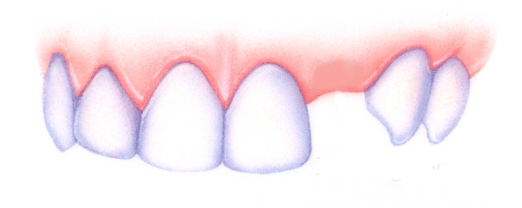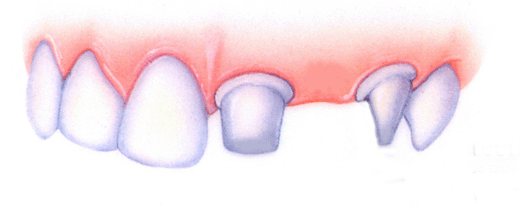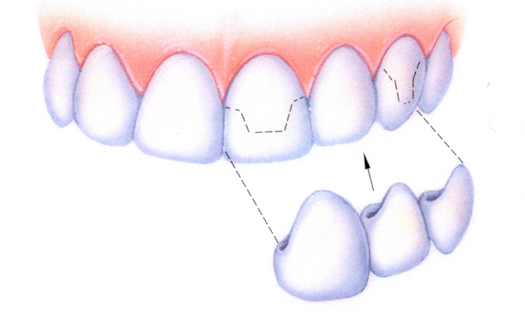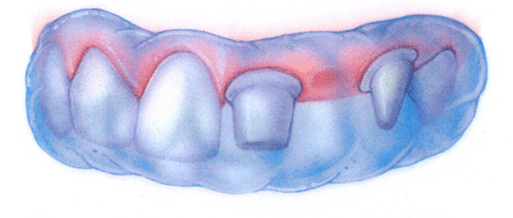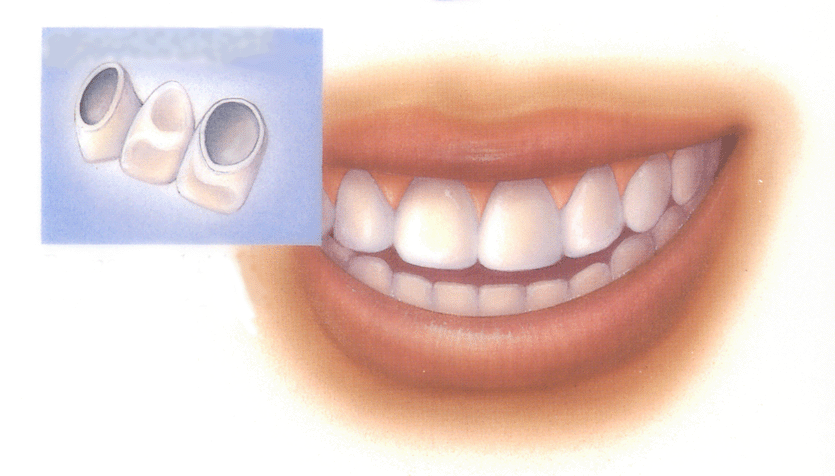A Fixed Bridge (also known as a Fixed Prosthesis) is used to permanently replace a missing tooth, or teeth, by anchoring onto the neighboring teeth around the space. It consists essentially of crowns which are connected together, so that the missing tooth which has no root to hold a crown in place, is instead held in place by the teeth around it.
Okay, so you admit that going out drinking with your buddies
and getting into that bar fight wasn't such a good idea. Now what?
Or maybe you lost the tooth due to a really bad cavity, or gum disease, or another kind of accident. It happens.
After the patient is "comfortably numb", the teeth on either side of the missing tooth are prepared for the bridge. To do this, the teeth are shaped around their entire circumference, as well as the biting surface. The goal is to make room for the bridge to fit on and not be too bulky.
Fixed Bridge Fun Fact #1
If a tooth is accidentally knocked out and is retrievable, it may be possible to avoid all of this fixed bridge nonsense in the first place. Store the tooth in milk, and call your dentist, or an oral surgeon or periodontist, or get yourself (and the tooth) to the nearest hospital.
Sometimes the tooth can be reimplanted and have a long, successful life with you still attached to it!
Fixed Bridge Fun Fact #2
The goal of shaping a tooth for a bridge is to reduce the tooth by the same thickness that the future crown holding the bridge will be. Example: If the crown will be 2 mm (millimeters) thick, we reduce the tooth by 2 mm.This results in the crown being the same size as the original tooth. Results in a very natural looking bridge.
An impression is made of the shaped teeth. Apparently, here we're using some kind of cloudy blue stuff, but in reality it will be a putty-like material contained in a small tray that is much less threatening than it appears here. Over the years we found that, during the impression, patients prefer to be able to breathe !
Fixed Bridge Fun Fact #3
If the teeth are not reduced enough, then the bridge, which has to be a given thickness, will add bulk to the teeth. The final result may be a rounded, "chicklet"-like shape that is not too esthetically desirable. I'm sure you've seen these out there in people's mouths, and were nice enough not to comment about it.
The impression goes to go to the dental laboratory for fabrication of the bridge. It takes about a week to return. Patients don't seem to be too happy about going home without teeth, so we make a temporary bridge on the spot, made of acrylic and kept in place with a temporary cement. It should look, feel, and function pretty much like a normal tooth so there should be only a minimal impact on your lifestyle. Usually with the temporary bridge we'll tell you to avoid chewy things like bagels and pizza crust .
About a week or so later, the patient returns. If the bridge feels great, we pop it off and put it back on with a permanent cement. It should function like healthy teeth, and there should be no restrictions with eating.
The permanent bridge comes back from the laboratory. It is checked, usually over several sessions, to ensure that it has proper fit, esthetic appearance, and function. I usually will first put it in with a temporary cement and let the patient try it in place for a week or so, to make sure that it works well too.
"You have to test drive it before you buy it!"
The example on the left shows a 3-unit fixed bridge on the front teeth. The three units consist of one missing tooth in the middle, and two supporting teeth (abutments) on either side of it. It's like three caps connected together.
Fixed Bridge Fun Fact #4
Sometimes, even without any missing teeth, we will make a fixed bridge that connects several teeth together. The need arises when people have had bone loss due to gum disease, and their teeth are individually weak. We will "splint" them together with crowns and the improvement in their stability can be tremendous.
"In Unity There Is Strength"
- Aesop (c. 620-564 BC) -
IMPORTANT NOTE
In dental procedures, like all other medical procedures, every situation is different and there may be limitations and restrictions as to what can be done, and what results may be achieved, so there are no guarantees here.
This is where faith and trust in your doctor come in.
"We don't have the Owners Manual for the Human Body"
(516) 822-2911
559 Woodbury Road
Plainview, NY 11803
